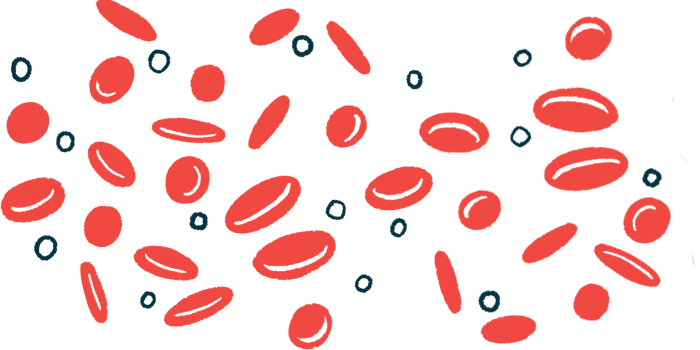No gains in transfusion efficacy with C1-INH treatment for CAD
Treatment also didn't reduce signs of hemolysis, Phase 2 trial showed

A treatment to reduce the activation of the immune complement system didn’t increase the effectiveness of red blood cell transfusions in people with severe cold agglutinin disease (CAD) and other complement-mediated autoimmune hemolytic anemia (CM-AIHA).
That’s according to a small, proof-of-concept Phase 2 clinical trial (EudraCT2012-003710-13) that found the treatment — a C1-esterase inhibitor (C1-INH) — didn’t lower signs of red blood cell destruction, or hemolysis, either.
Still, it isn’t clear whether C1-INH’s dosing regimen was optimal, meaning how effective it is in severe CM-AIHA “remains to be determined,” the researchers wrote in the study, “C1-inhibitor treatment in patients with severe complement-mediated autoimmune hemolytic anemia,” which was published in Blood Advances.
CM-AIHA refers to a group of conditions wherein the immune system produces self-reactive antibodies that attack and destroy red blood cells via the activation of the complement system, an immune pathway. CAD is a type of CM-AIHA where disease-driving antibodies, called cold agglutinins, attack red blood cells at low temperatures. These attacks result in too few red blood cells (anemia) and poor oxygen transport throughout the body.
Since severe hemolysis can be life-threatening, red blood cell transfusions are needed. These donor cells are still subject to destruction by self-reactive antibodies, making transfusions less effective, however.
As such, there’s a need for fast-acting therapies that can stop hemolysis and improve the effectiveness of transfusions for severe cases.
C1-INH is a naturally occurring protein that works to suppress complement activation. Lab-made versions of human C1-INH have treated hereditary angioedema (HAE) — an inflammatory condition caused most often by C1-INH deficiency — and are being investigated for other complement-mediated disorders.
Studies in lab-grown cells and a handful of patient reports suggested C1-INH treatment may ease hemolysis and improve transfusion efficacy in CM-AIHA, leading a team of researchers in the Netherlands to conduct a proof-of-concept Phase 2 trial at a single Dutch center to learn more about this approach’s safety and efficacy. A total of 10 adults (five women, five men) with severe CM-AIHA were recruited from 2014 to 2021.
Severe CM-AIHA was defined as hemoglobin levels less than 8 grams per deciliter (g/dL) and a current need for transfusion of at least two units of red blood cells. Hemoglobin is a protein on red blood cells. Low levels of it are an indicator of anemia.
Five participants had CAD and the other five had mixed AIHA, meaning the disease-driving antibodies bind to red blood cells at both low and high temperatures.
The patients’ median age was 62 (range, 37-77), their median hemoglobin levels at the study’s start were 5.4 g/dL, and all had received at least one previous line of AIHA treatment.
C1-INH treatment fails to ‘normalize transfusion efficacy’ in severe CAD
All received four doses of Takeda Pharmaceuticals’ Cinryze, an approved C1-INH therapy for HAE, after the transfusion of two red blood cell units.
The first and highest dose (6,000 U) was given just before the blood transfusion, and decreasing doses (3,000, 2,000, and 1,000 U) were given every 12 hours thereafter.
To assess whether C1-INH improved transfusion efficacy, the researchers compared peak hemoglobin levels right after the transfusion with those over the next 24 hours. The goal was to see how many patients showed less than a 1 g/dL decrease in hemoglobin during that time.
Seven participants met that goal, but at least six were already achieving it after blood transfusions in the 30 days before the trial.
Hemoglobin levels significantly increased, peaking after about 48 hours, but declined toward pre-treatment levels over time.
Levels of LDH and bilirubin, two markers of hemolysis, remained stable, suggesting hemolytic activity was still high. The researchers noted it was possible hemolysis would have been more severe without the therapy, however.
Six people required additional blood transfusions during the study.
C1-INH levels and activity were significantly increased, peaking 48 hours after the first dose and dropping to pre-treatment levels after seven days.
At the study’s start, patients exhibited signs of elevated complement activation and inflammation relative to healthy people. This remained largely unchanged after C1-INH treatment.
Still, deposition of C3, a complement protein, on red blood cells was significantly reduced in the first 48 hours after treatment.
The C1-INH treatment was generally safe and well tolerated. Of the 40 side effects reported in seven people (70%), 16 were considered possibly related to treatment. All were mild or moderate. No serious side effects were deemed treatment-related.
The researchers ultimately concluded the C1-INH dose in the study didn’t normalize transfusion efficacy in people with severe CAD and other CM-AIHAs.
“We cannot exclude that higher dosing or a longer duration of C1-INH administration might have been more effective,” the researchers wrote, noting that, while the trial’s goal wasn’t met, the findings contribute to understanding how treatments that suppress the complement system might benefit severe CM-AIHA patients.
Since several patients were already achieving the primary goal before the study, future trials should look at the normalization of hemolysis or the ability to achieve transfusion-independence, they said.
The study was supported by Shire ViroPharma, now a part of Takeda.






